Our last day in Siena and those bells of San Domenico did not disappoint and they tolled every 30 minutes.
After breakfast Peter and I visit the Fortezza di Santa Barbara, is a fort built in the city between 1561 and 1563 on the orders of Duke Cosimo, a few years before he became the first Grand Duke of Tuscany
.
Construction of the fortress followed the Battle of Marciano, which in 1554 marked the final defeat of Siena by its long-standing rival, Florence. It was located on the site of a previous fort, known as the Cittadella/Citadel, which had been built in 1548 on the orders of the Emperor Charles V after the city came under the control of Spain, subjected to the authority of the Spanish ambassador, Diego Hurtado de Mendoza.On 26 July 1552 the Sienese rose up against the Spanish, expelling them from the city and destroying the Citadel/Cittadella.Slightly less than three years later, on 21 April 1555, after more than a year under siege by Spanish and Tuscan troops, the city surrendered. The Republic of Siena, supported by its French allies, continued to defy the Spanish from Montalcino, but the city of Siena itself was now back under Spanish control. Four years later, in April 1559, the Peace of Cateau-Cambresis was signed between France and Spain. This left the Republic of Siena without allies and led to total surrender
. The city fell under the control of Spain’s regional ally, the Florentine Duke Cosimo. In order to prevent any attempt by the Sienese to recover their independence, Cosimo ordered the construction of the present fortress on the site of the earlier Spanish Citadel. The project was entrusted to Cosimo’s celebrated Urbino born architect, Baldassarre Lanci who had started his career as a military engineer. Construction commenced in 1561 and was completed just two years later in 1563.The fortress was demilitarised only at the end of the eighteenth century, at which point it became part of the city’s public life. In 1937, following a major restoration, the fortress was transformed into its present condition as a public park. It houses an Enoteca and frequently hosts art exhibitions. It is also used for festivals and concerts and is home to the Siena Jazz foundation.
Peter and I then visited the House of Saint Catherine. Caterina di Giacomo di Benincasa was born on 25 March 1347 in Black Death ravaged Siena, to Giacomo di Benincasa, a cloth dyer who ran his enterprise with the help of his sons, and Lapa Piagenti, possibly the daughter of a local poet
. Lapa was about forty years old when she prematurely gave birth to twin daughters, Catherine and Giovanna. She had already borne 22 children, but half of them had died. Giovanna was handed over to a wet-nurse and presently died. Catherine was nursed by her mother and developed into a healthy child. She was two years old when Lapa had her 25th child, another daughter named Giovanna. As a child Catherine was so merry that the family gave her the pet name of "Euphrosyne", which is Greek for "joy" and the name of an early Christian saint. Catherine took the veil, aged eight and experienced many visions of God, from whom she received the stigmata. In 1380, Catherine died in Rome and was canonised in 1461. Today her house is surrounded by chapels and cloisters, decorated with paintings of events from her life.
Peter and I continued on and visited the Basilica Santa Maria dei Servi. The church is built on the site of the former Church of San Clement, which was acquired by the Servite order in the Medieval era
. The original Basilica was built in the 13th century, but later underwent reconstruction and transformation which continued until the 15th-16th century.
The façade is simple and unadorned, with a single doorway and a rose window (indications of another can be discerned on the wall). It is in the Romanesque period style.The adjoining Campanile is likewise of the 13th century, richly embellished by four orders of windows. It was entirely restored in the 20th century. The church building stands atop broad entrance stairs, with views over the Duomo and the Palazzo Publico of Siena. The interior is in great contrast with the rough and bare aspect of the exterior. A renaissance design is attributed to Baldassare Peruzzi. The church was enlarged in the fourteenth or fifteenth century, as seen in the interior of a Latin cross, where the Gothic style of the transept and apse joins the Renaissance style of the three aisles. The Renaissance style does not continue into the transept and apse, which are in the Gothic style
. Near the entrance is a Crucifix of the 14th century and a Holy Water stoup of the 13th century.
For lunch Peter and I dropped into a deli to purchase some delicacies like, a salad, olives, prosciutto, octopus and blackberries (only €1.50 a punnet) and enjoyed our lunch by a fountain.
After lunch we visited the Basilica San Francesco. It was erected in c. 1228-1255 and later enlarged in the 14th-15th centuries, the original Romanesque edifice being turned into the current large Gothic one.
Finally deciding to go and do a little shopping and Peter bought himself some shirts and we had also bought s few souvenirs. We returned to the accommodation to join the girls for a drink and a spuntino, before heading out to dinner at "Il Mascalano" restaurant. We returned to the same restaurant because we enjoyed the Alfresco dining experience. It was also lovely to see that four legged friends were welcomed to dine out with their owners.
After dinner it was time to return to Piazza del Campo and Siena Cathedral for some night time photography and listen to some lovely opera before retiring for the evening.
Another day of Churches!
Tuesday, September 06, 2011
 Siena, Tuscany, Italy
Siena, Tuscany, Italy
Other Entries
-
15A World of Ceramics
Aug 2017 days prior Caltagirone, Italyphoto_camera13videocam 0comment 0
Caltagirone, Italyphoto_camera13videocam 0comment 0 -
16Welcome to Sicily Peter Selar
Aug 2116 days prior Zafferana Etnea, Italyphoto_camera2videocam 0comment 1
Zafferana Etnea, Italyphoto_camera2videocam 0comment 1 -
17Good Company and Good Food.
Aug 2215 days prior Santa Tecla di Acireale, Italyphoto_camera2videocam 0comment 0
Santa Tecla di Acireale, Italyphoto_camera2videocam 0comment 0 -
18Peter visits Acireale
Aug 2314 days prior Acireale, Italyphoto_camera17videocam 0comment 1
Acireale, Italyphoto_camera17videocam 0comment 1 -
19Temples of Gods
Aug 2413 days prior Agrigento, Italyphoto_camera21videocam 0comment 1
Agrigento, Italyphoto_camera21videocam 0comment 1 -
20Chill Out & Shopping
Aug 2512 days prior Acireale, Italyphoto_camera4videocam 0comment 0
Acireale, Italyphoto_camera4videocam 0comment 0 -
21Checking out the sights with Aunty Mary & Cousins
Aug 2611 days prior Aci Trezza, Italyphoto_camera20videocam 0comment 0
Aci Trezza, Italyphoto_camera20videocam 0comment 0 -
22Time Is Running Out!
Aug 2710 days prior Acireale, Italyphoto_camera12videocam 0comment 1
Acireale, Italyphoto_camera12videocam 0comment 1 -
23Delights of Taormina
Aug 289 days prior Taormina, Italyphoto_camera13videocam 0comment 4
Taormina, Italyphoto_camera13videocam 0comment 4 -
24Transit to Montepulciano
Aug 298 days prior Montepulciano, Italyphoto_camera25videocam 0comment 0
Montepulciano, Italyphoto_camera25videocam 0comment 0 -
25The Journey Begins
Aug 307 days prior Pienza, Italyphoto_camera22videocam 0comment 0
Pienza, Italyphoto_camera22videocam 0comment 0 -
26Immersing The Body in the Thermal Springs.
Aug 316 days prior Bagno Vignoni, Italyphoto_camera11videocam 0comment 1
Bagno Vignoni, Italyphoto_camera11videocam 0comment 1 -
27From Thermal Springs to Chants in an Abbey.
Sep 015 days prior Montalcino, Italyphoto_camera15videocam 0comment 4
Montalcino, Italyphoto_camera15videocam 0comment 4 -
28Tranquility and Peace.
Sep 024 days prior Buonconvento, Italyphoto_camera8videocam 0comment 0
Buonconvento, Italyphoto_camera8videocam 0comment 0 -
29Beautiful Abbey and Gardens
Sep 033 days prior Buonconvento, Italyphoto_camera13videocam 0comment 0
Buonconvento, Italyphoto_camera13videocam 0comment 0 -
30Three Remain, Eight Moved On.
Sep 042 days prior Murlo, Italyphoto_camera22videocam 0comment 0
Murlo, Italyphoto_camera22videocam 0comment 0 -
31Beautiful Siena
Sep 051 day prior Siena, Italyphoto_camera10videocam 0comment 0
Siena, Italyphoto_camera10videocam 0comment 0 -
32Another day of Churches!
Sep 06 Siena, Italyphoto_camera11videocam 0comment 2
Siena, Italyphoto_camera11videocam 0comment 2 -
33Goodbye Siena, Hello Milano.
Sep 071 day later Milan, Italyphoto_camera2videocam 0comment 0
Milan, Italyphoto_camera2videocam 0comment 0 -
34Exploring Milano, the Fashion Capital.
Sep 082 days later Milan, Italyphoto_camera14videocam 0comment 0
Milan, Italyphoto_camera14videocam 0comment 0 -
35Chilling Out in Milan
Sep 093 days later Milan, Italyphoto_camera3videocam 0comment 1
Milan, Italyphoto_camera3videocam 0comment 1 -
36Road Trip.
Sep 104 days later Pieve Emanuele, Italyphoto_camera3videocam 0comment 0
Pieve Emanuele, Italyphoto_camera3videocam 0comment 0 -
37From the Table to the Nudist Beach.
Sep 115 days later Milan, Italyphoto_camera1videocam 0comment 1
Milan, Italyphoto_camera1videocam 0comment 1 -
38All Roads Lead to Rome
Sep 126 days later Rome, Italyphoto_camera2videocam 0comment 1
Rome, Italyphoto_camera2videocam 0comment 1 -
39Discovering Rome.
Sep 137 days later Rome, Italyphoto_camera15videocam 0comment 4
Rome, Italyphoto_camera15videocam 0comment 4 -
40Ancient Rome
Sep 148 days later Rome, Italyphoto_camera16videocam 0comment 2
Rome, Italyphoto_camera16videocam 0comment 2 -
41Last Day in Rome
Sep 159 days later Rome, Italyphoto_camera17videocam 0comment 3
Rome, Italyphoto_camera17videocam 0comment 3 -
42Home Sweet Home!
Sep 1610 days later Melbourne, Australiaphoto_camera1videocam 0comment 0
Melbourne, Australiaphoto_camera1videocam 0comment 0
Comments
2025-05-22
Comment code: Ask author if the code is blank

 Siena, Tuscany, Italy
Siena, Tuscany, Italy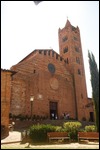

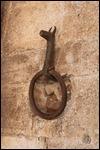
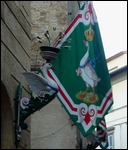
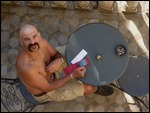


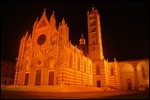
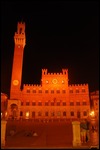
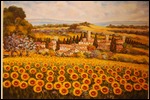
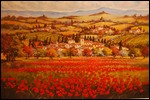
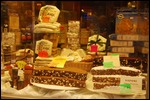
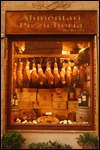
Miss Caroline
2015-08-30
You guys are certainly seeing all the sights.
To think those buildings have been around since the 1500's..
You must have gotten tingles just being there...
Keep up with the blogs Jojo, they are amazing..
Hi Pete, big hugs to you too xoxox